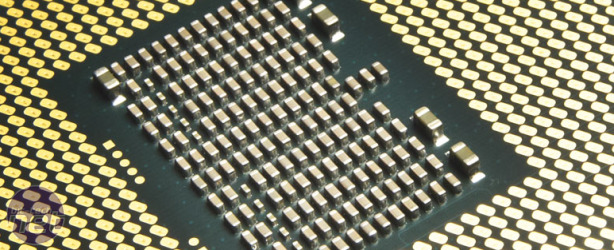Performance Analysis
Given the frequency advantage the i7-990X has over the i7-980X, it was no surprise to see it edge out its older stable mate in all of our stock speed tests. In Cinebench 11.5, it was 0.25 points ahead of the i7-980X, a result that was mirrored by the slight 0.117 of a second advantage it demonstrated in WPrime. The i7-990X also demolished Intel's LGA1155 CPUs in these tests, thanks to its 12 processing threads.Its higher stock clock speed and extra Turbo Boost headroom also meant that the i7-990X managed to get a slight lead over the i7-980X in our Media Benchmarks. Its overall score of 2,145 was 7 per cent faster than the 2,002 points of the i7-980X, which is an excellent result given the 4 per cent nominal clock speed advantage of the i7-990X.
However, the i7-990X faced stiff competition from the top-end Intel Sandy Bridge CPUs, only narrowly beating the i5-2500K and losing out to the i7-2600K - clearly Turbo Boost worked well on the new CPU.
Meanwhile, games showed less benefit from the extra clock speed on offer from the i7-990X, with Crysis showing no sign of a frame rate increase. This meant that the i7-990X lagged slightly behind the vastly cheaper LGA1155 based i5-2500K and i7-2600K.
Overclocking
Next, we tried overclocking, starting with an aggressive 1GHz overclock, which the i7-990X easily took in its stride. Encouraged by this success, we continued to push the chip further, eventually settling on a stable overclock of 4.6GHz with a QPI of 200MHz and a 23x CPU multiplier.This represents a 1.14GHz boost over the i7-990X's stock speed. The i7-990's overclock is also superior to the 1.07GHz stable overclock we achieved with the i7-980X. To stabilise this overclock, we had to pump 1.412V through the CPU, 1.96V and 1.375V through the CPU PLL and QPI/DRAM voltages respectively and 1.3V and 1.2V to the IOH and ICH.
We also had to set the UCLK frequency to 3,208MHz and the QPI link frequency to 7,218MT/s. We had the CPU happily booting at just under 4.8GHz, but couldn't get this overclock stable using air cooling; this is a good sign that there was still some headroom left in the chip that could be unlocked with more exotic methods of cooling.
At these speeds, the i7-990X demolished our test suite, clocking in record results in both Cinebench 11.5 and WPrime. We also saw a healthy 23 per cent increase in the CPU's overall Media Benchmarks score, with an impressive 2,645 points. However, the i5-2500K returned a score of 2,687 when overclocked, while the overclocked i5-2600K scored 2,702.
Meanwhile, the i7-990X's power consumption during our testing proved interesting, as it drew far less power than the i7-980X. This is due to the lower 1V vid of our sample, which places the CPU at the lower end of the range of vids with which LGA1366 CPUs ship.
Conclusion
We lauded the i7-980X when it launched, as it justified its exorbitant price with its extra pair of cores and better overclocking potential compared with other LGA1366 CPUs. The i7-990X shares these features but enters a changed market, due to Intel's own LGA1155 CPUs.The i5-2500K is roughly as quick as, and sometimes quicker than, the i7-990X in all but the most heavily multi-threaded tasks. It's also very overclockable, and considerably cheaper. As a result, only those running professional-grade multi-thread-optimised applications should consider the i7-990X, and even then, you'd be better off buying in an i7-980X, which is nearly as fast but £50 cheaper.
- Performance
- x
- x
- x
- x
- x
- x
- x
- x
- x
- -
- 9/10
- Features
- x
- x
- x
- x
- x
- x
- x
- x
- x
- -
- 9/10
- Value
- x
- x
- x
- -
- -
- -
- -
- -
- -
- -
- 3/10
- Overall
- x
- x
- x
- x
- x
- x
- -
- -
- -
- -
- 6/10

MSI MPG Velox 100R Chassis Review
October 14 2021 | 15:04











Want to comment? Please log in.